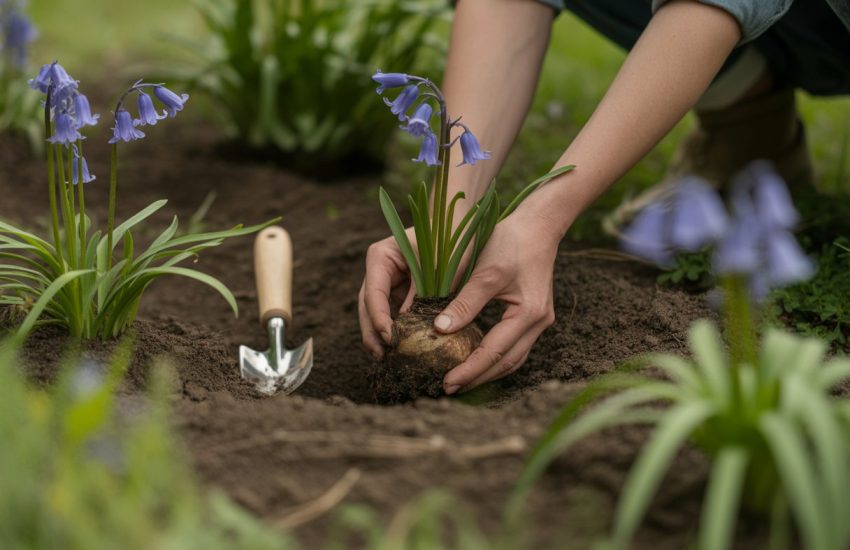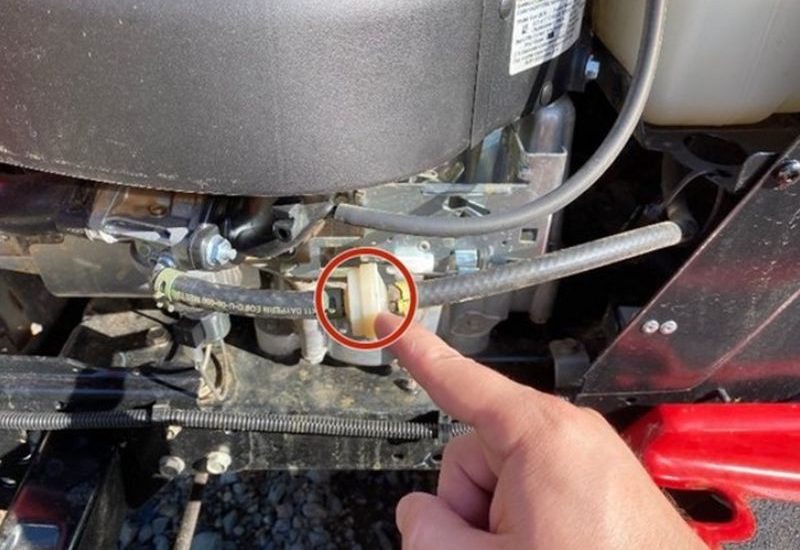Tomatoes in Grow Bags: A Complete Guide to Growing Tomatoes in Containers
Tomatoes are a popular vegetable to grow in gardens or on balconies, but not everyone has the space or resources to plant them in the ground. Grow bags provide a convenient and space-saving solution for growing tomatoes, as they can be placed on a balcony, patio, or even indoors. In this article, we will explore the benefits of growing tomatoes in grow bags and provide tips for success.
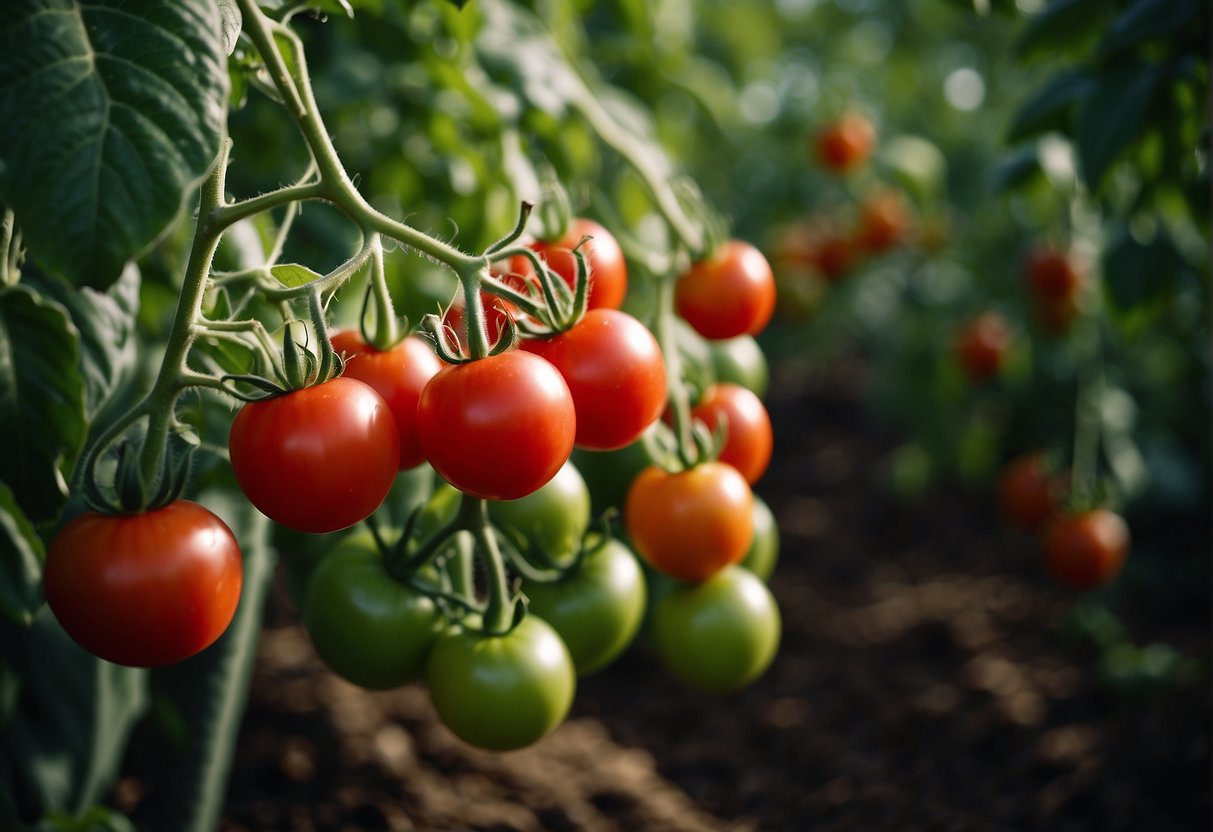
One of the main advantages of using grow bags for tomatoes is their portability. Unlike traditional garden beds, grow bags can be easily moved to different locations depending on the amount of sunlight and temperature required for optimal growth. Additionally, grow bags provide excellent drainage, preventing waterlogged soil and root rot. This is especially important for tomatoes, which require consistent moisture but can be susceptible to fungal diseases if their roots are too wet.
When choosing a grow bag for tomatoes, it is important to select one that is large enough to accommodate the plant’s root system. A 5-gallon grow bag is suitable for a single tomato plant, while a 10-gallon bag can accommodate two plants. It is also important to choose a high-quality potting mix that is specifically formulated for container gardening, as this will provide the necessary nutrients and drainage for healthy tomato growth. With the right care and attention, growing tomatoes in grow bags can be a rewarding and productive experience.
Choosing the Right Grow Bags
When it comes to growing tomatoes in grow bags, choosing the right type of bag is crucial for the success of your plants. There are a few things to consider when selecting the best grow bags for your tomato plants.
Material Considerations
There are two main types of grow bags: fabric and plastic. Fabric grow bags are made from breathable material that allows for proper air circulation and drainage. They are also lightweight and easy to move around. Plastic grow bags, on the other hand, are more durable and can hold more soil. They are also less likely to tear or puncture. Ultimately, the choice between fabric and plastic grow bags comes down to personal preference and the specific needs of your plants.
Size and Capacity
When it comes to the size of your grow bags, bigger is not always better. While larger bags may seem like a good idea, they can actually lead to overwatering and root rot. A 5-gallon bucket is a good size for a single tomato plant, but if you want to grow multiple plants in one container, you’ll need a larger bag. It’s also important to consider the weight of the bag when it’s filled with soil. Heavy bags can be difficult to move around, so look for bags with handles to make transportation easier.
In addition to size, it’s important to consider the capacity of your grow bags. Some bags are designed to hold a specific amount of soil, while others are more flexible. Make sure to choose a bag that can hold enough soil to support the root system of your tomato plants.
Overall, when choosing the right grow bags for your tomato plants, it’s important to consider the material, size, and capacity of the bags. By selecting the right bags, you can help ensure the success of your tomato plants and enjoy a bountiful harvest.
Preparing for Planting
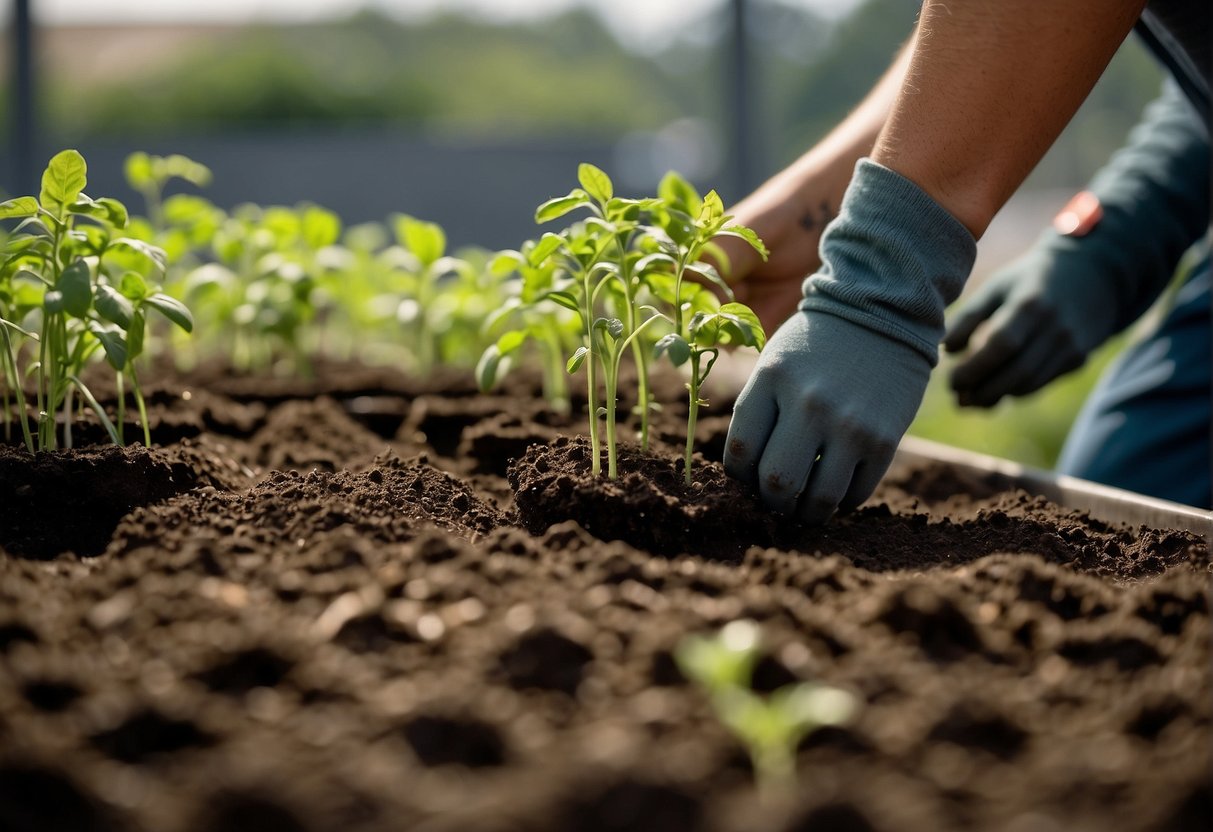
Before planting tomatoes in grow bags, it is important to prepare the bags and the soil properly. This will help ensure healthy growth and a bountiful harvest. Here are some tips on how to prepare for planting.
Selecting Quality Soil
The quality of the soil used in grow bags can make a big difference in the success of tomato plants. It is important to choose a potting mix that is well-draining and nutrient-rich. A good potting mix should contain a blend of peat, compost, and other organic materials.
When selecting a potting mix, look for one that is specifically formulated for tomatoes. These mixes are designed to provide the right balance of nutrients and pH levels for optimal growth. It is also important to choose a mix that is free of pests and diseases.
Tomato Varieties and Seedlings
When selecting tomato seedlings for grow bags, it is important to choose varieties that are suitable for container gardening. Look for determinate or bush varieties that do not require staking or trellising. These varieties are more compact and will grow well in the limited space of a grow bag.
It is also important to choose healthy seedlings. Look for plants that have sturdy stems and healthy leaves. Avoid plants that are wilted or have yellowing leaves, as these may be signs of disease or poor health.
In conclusion, preparing for planting is an important step in growing healthy and productive tomato plants in grow bags. By selecting quality soil and healthy seedlings, growers can set their plants up for success.
Planting and Supporting Tomatoes
When it comes to growing tomatoes in grow bags, planting and supporting them correctly is crucial for a bountiful harvest. Here are some tips for transplanting and supporting tomato plants in grow bags.
Transplanting Techniques
Transplanting tomato plants from their original containers to grow bags can be a delicate process. It’s important to handle the plants gently and avoid damaging the roots. One effective technique is to use a planting hole that is slightly larger than the root ball of the tomato plant. This will give the roots room to spread out and establish themselves in the grow bag.
Another technique is to gently loosen the roots of the tomato plant before transplanting. This can help the roots grow more easily into the new soil. It’s also important to water the plant thoroughly after transplanting to help it adjust to its new environment.
Support Structures
Tomato plants can grow quite tall and heavy, so providing support is essential. One common method is to use tomato cages, which are wire structures that surround the plant and provide support as it grows. Another option is to use stakes, which are inserted into the soil near the plant and tied to the stem as it grows.
When choosing a support structure, it’s important to consider the size and weight of the tomato plant. A sturdy support structure will prevent the plant from bending or breaking under the weight of its fruit.
In conclusion, proper planting and support techniques are essential for growing healthy tomato plants in grow bags. By following these tips, you can help your plants thrive and produce a bountiful harvest.
Maintenance and Care
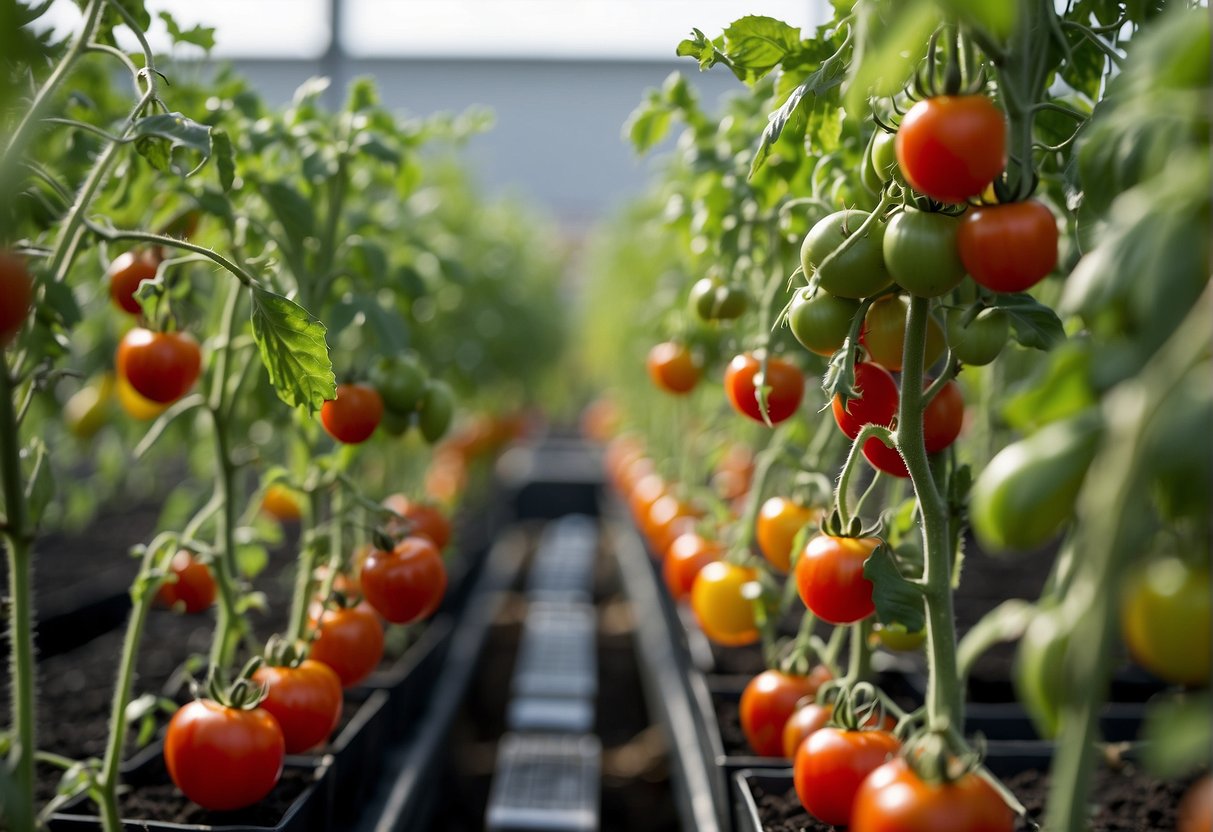
Watering Requirements
Tomatoes in grow bags require consistent watering to ensure healthy growth and fruit production. It is recommended to water the plants deeply, at least once a week, or more frequently during hot and dry weather conditions. However, overwatering can lead to root rot and other diseases, so it is important to ensure that the soil is well-drained and not waterlogged.
To check if the plants need watering, insert a finger into the soil about an inch deep. If the soil feels dry, it is time to water the plants. It is also important to water the plants at the base to avoid wetting the foliage, which can promote the growth of fungal diseases.
Pruning and Fertilizing
Pruning is an important aspect of tomato plant maintenance, as it helps to promote healthy growth and fruit production. It is recommended to remove the suckers that grow in the axils of the leaves, as they can divert essential nutrients and energy away from the main stem and fruit.
Fertilizing is also important to ensure healthy growth and fruit production. Organic fertilizers such as compost, bone meal, and fish emulsion are recommended, as they provide essential nutrients such as nitrogen and calcium. Liquid fertilizers can also be used, but it is important to follow the manufacturer’s instructions for proper application.
In conclusion, proper maintenance and care are essential for the successful growth and fruit production of tomatoes in grow bags. By following these simple guidelines for watering, pruning, and fertilizing, gardeners can enjoy a bountiful harvest of delicious and nutritious tomatoes.
Harvesting and Storage

When it comes to harvesting tomatoes from grow bags, it is important to wait until the fruits are fully ripe. This will ensure that they are at their peak flavor and nutrient content. To determine ripeness, look for a deep, rich color and a slight give when gently squeezed.
To harvest the tomatoes, simply twist them off the stem or use a pair of clean shears to cut the stem just above the fruit. Be sure to handle the tomatoes carefully to avoid bruising or damaging the delicate skin.
Once harvested, it is best to store the tomatoes at room temperature until they are fully ripe. After that, they can be stored in the refrigerator for up to a week. However, it is important to note that refrigeration can affect the texture and flavor of the tomatoes, so it is best to use them as soon as possible.
To ensure a bountiful harvest, it is important to keep the tomato plants healthy throughout the growing season. This can be achieved by providing them with adequate water, nutrients, and sunlight, as well as monitoring for pests and diseases.
By following these simple tips for harvesting and storing tomatoes from grow bags, anyone can enjoy the delicious taste and nutritional benefits of homegrown tomatoes all season long.
Frequently Asked Questions
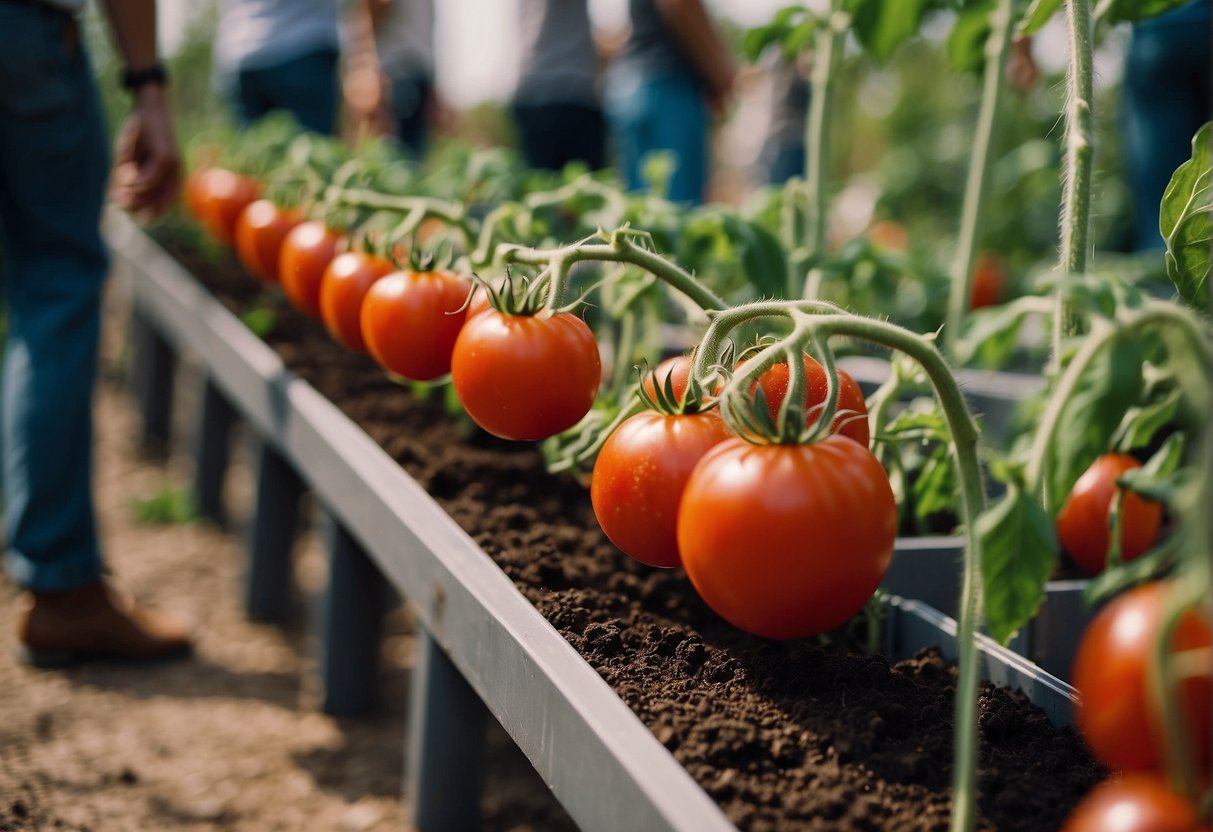
What is the optimal size of grow bag for growing tomatoes?
The optimal size of grow bag for growing tomatoes is at least 5 gallons. A larger size, such as a 10-gallon bag, is even better. This allows the tomato plant to develop a strong root system and have enough space to grow.
How should tomatoes be planted and supported in grow bags?
Tomatoes should be planted in the center of the grow bag with a support system in place. A tomato cage or stake is recommended to keep the plant upright and prevent it from bending or breaking due to the weight of the fruit.
Which type of soil is best suited for tomatoes in grow bags?
A high-quality potting mix with added organic matter is best suited for tomatoes in grow bags. Avoid using garden soil or topsoil, as they can contain pests and diseases that can harm the plants.
How frequently should tomatoes in grow bags be watered?
Tomatoes in grow bags should be watered deeply and regularly, about once a day or every other day depending on the weather conditions. It is important to ensure that the soil is moist but not waterlogged, as this can lead to root rot.
Can cherry tomatoes be successfully grown in grow bags, and if so, how?
Yes, cherry tomatoes can be successfully grown in grow bags. The planting and support methods are the same as for regular tomatoes. Cherry tomatoes tend to be smaller and produce more fruit, so it is important to ensure that the plant is properly supported to prevent it from becoming top-heavy.
What is the maximum number of tomato plants recommended per grow bag?
It is recommended to plant only one tomato plant per grow bag to allow enough space for the roots to grow and prevent overcrowding. Overcrowding can lead to poor growth and reduced yields.

